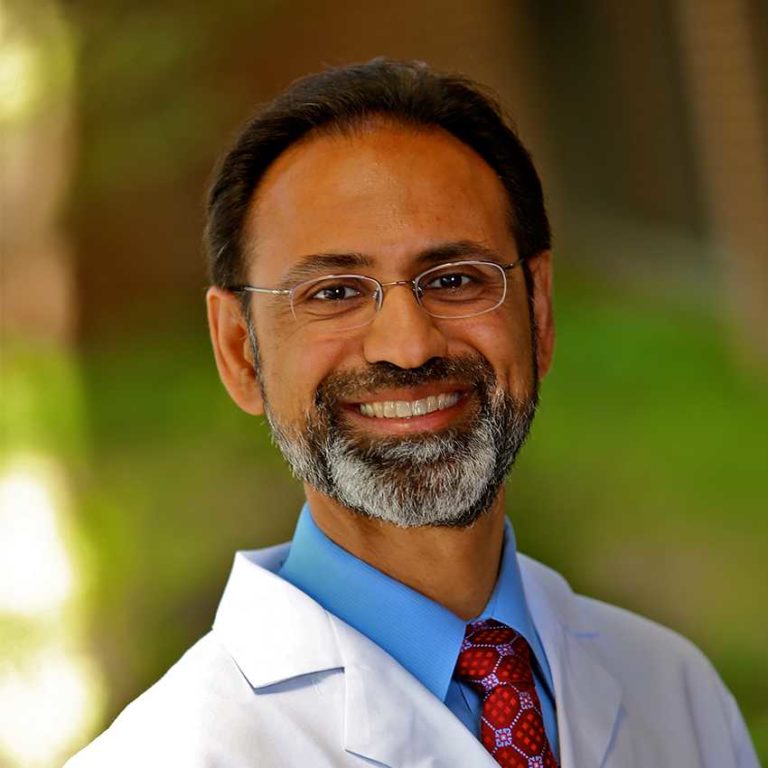Given the attention “all-natural” consumables receive these days, it’s easy to wonder if there’s a more natural approach when it comes to in vitro fertilization (IVF) treatment. At Shady Grove Fertility, we do not offer an ‘all-natural’ IVF protocol, often called natural cycle IVF, because, simply put, it’s not the right thing to do for our patients.
Natural cycle IVF is a treatment similar to traditional, or stimulated, IVF, but without the use of medications to stimulate the ovaries to produce multiple eggs. It might sound appealing to those who dislike medications. The problem, though, is that these ‘natural cycles’ still require all the other costly and demanding aspects of traditional IVF. The frequent appointments, injections to trigger ovulation, surgical egg retrievals, and embryo development in the lab are all present in natural cycle IVF.
Yet, natural cycle IVF has unequivocally demonstrated a significantly lower rate of pregnancy than traditional IVF.
The physicians at Shady Grove Fertility simply can’t justify putting a patient through natural cycle IVF treatment with such a low chance of success. Therefore, we urge couples who are interested in natural cycle IVF to learn exactly what it is and compare the variables between different modalities that are truly the most important.
How natural cycle IVF differs from traditional IVF
During a normal monthly reproductive cycle, a single egg grows and matures inside an ovarian follicle. When a woman’s hormones reach a certain level, the mature egg is released and becomes available to be fertilized. In a stimulated IVF cycle, a woman takes medications for 9 to 12 days that stimulate both of her ovaries to grow and mature multiple egg follicles. During this stimulation phase, a physician will monitor the patient with ultrasounds and bloodwork to track the growth of the follicles until they reach a certain size.
A physician will then perform an egg retrieval procedure under anesthesia to remove the eggs from the follicles. They are then fertilized in the lab, where the embryos will grow until an embryologist can identify the best one(s) for transfer back into the woman’s uterus. Any high-quality embryos that are not transferred can be frozen for future use.
Since natural cycle IVF does not use medications to stimulate the ovaries, the cycle can only produce up to one mature egg at a time. Patients are monitored with ultrasounds and bloodwork to track the development of the single ovarian follicle so that it is not released (ovulated) by the body before it can be retrieved.
The patient then undergoes the same type of egg retrieval that is done in a stimulated IVF cycle to retrieve the egg from the single follicle. If the egg retrieval is successful, an attempt is made to fertilize the egg in the laboratory. If a viable embryo develops, a physician will transfer it back to the uterus.
Natural cycle IVF and a traditional IVF cycle look very similar in terms of the timeline and the procedures followed. The difference is just that the patient does not use medications to stimulate multiple egg development in a natural IVF cycle.
Before you make a decision about which treatment to pursue, investigate claims closely, especially if a center touts that a particular treatment approach is less stressful, less costly, and less risky. Ask how that treatment performs on your most important criteria—delivering a baby:
Compare success rates per cycle
At Shady Grove Fertility, when evaluating treatment options, we encourage you to look at success rates and ask questions until you truly understand the data. Be sure to compare apples to apples because, believe it or not, different centers can present statistics in misleading ways. Ask the hard questions, specifically, what are the pregnancy and live birth rates per initiated cycle? That way, you have a more realistic picture of their actual probability of taking home a baby.
Pregnancy and live birth rates for traditional IVF cycles are dramatically higher than natural cycle IVF. In fact, one may have to undergo three to four natural cycles in order to achieve a successful pregnancy—compared to one stimulated IVF cycle. One important element that influences this success rate is the retrieval of multiple mature eggs.
The main reason success rates for natural cycle IVF are so low is that, without the use of medications, there is a much higher chance of a cycle being cancelled at each stage. Many patients will prematurely ovulate, or an egg cannot be retrieved at the time of egg retrieval. And many others will have a cycle that doesn’t result in fertilization, and therefore, no embryo. The resultant delivery rate per initiated cycle for women 37 or under is low, and very low for women over 40. The rate of pregnancy is about the same as intrauterine insemination (IUI); however, IUI is much less costly and doesn’t require a surgical procedure. In general, IUI success rates are approximately 15 percent for women 37 and under and 5 to 10 percent in women order than 40.
The option to freeze extra embryos
In addition, patients doing natural cycle IVF do not have the possibility of freezing embryos, which nearly 50 percent of patients have after doing a traditional IVF cycle. Frozen embryos have the same pregnancy rates as fresh cycles of traditional IVF — without ovarian stimulation or egg retrieval and at a fraction of the cost of a new cycle. These embryos essentially provide a second or even third chance at pregnancy, all from a single traditional cycle of IVF. Additionally, we can perform genetic testing on frozen embryos.
Frozen embryos also provide you with the possibility of having additional children years later, from the same cycle. If you are in your 30s, age and embryo freezing should factor heavily into your decision. Simply put, frozen embryos are a way of stopping the aging process that can be so detrimental to fertility. This is not an option with natural cycle IVF.
Compare the financial cost of each cycle
While it’s easy to understand that natural cycle IVF costs less than a standard IVF cycle because it uses fewer medications, what’s critical to understand when comparing costs is that, from a value perspective, the choice is clear.
For the money you spend doing a traditional IVF cycle, your chances of pregnancy and live birth are far greater than with natural cycle IVF.
In fact, your chances are better with one stimulated IVF cycle than they are with three or four cycles of natural cycle IVF.
Add to that the possibility of having frozen embryos available at the end of a traditional cycle of IVF and its value becomes even greater.
Medications can certainly be costly, however, this is not the biggest expense associated with an IVF cycle. The biggest costs in an IVF cycle are the monitoring, egg retrieval, and laboratory costs. Maintaining a top-notch embryology lab with the latest equipment and highly trained staff is costly, but it’s critical to the success of IVF. Whether or not your IVF cycle is stimulated, you’ll still be relying heavily on the work of the embryology lab.
At Shady Grove Fertility, while we accept most major insurances, we’re aware that the cost of treatment can be a significant burden for the many patients without insurance coverage. That’s why we offer a number of financial programs that help patients afford treatment:
- Shared Risk 100% Refund Program
- Shared Help Discount Program
- Multi-Cycle Discount Program for IVF
- Financing
Fertility medications are also an expensive part of treatment, but many patients who don’t have coverage for fertility treatment do have coverage for some or all of their medications. If affording the medications is an issue, we ask that patients let us know. Shady Grove Fertility offers a Self-Pay Medication Discount Program, which can offer self-pay patients a combined discount of 25 percent off eligible medications from partner pharmacies.
In addition, patients at Shady Grove Fertility have a dedicated financial counselor who can help them get the most out of their insurance coverage and find the best path for affording treatment and medications.
Consider the risks
Undergoing ovarian stimulation with medications does carry one risk that is not experienced by patients doing natural cycle IVF. It is called ovarian hyperstimulation. Ovarian hyperstimulation happens when a woman’s body over-responds to the medications. This can cause fluid to build up in the abdomen and pelvis. In rare but severe cases, the condition can lead to more serious issues like blood clots. Mild cases of ovarian hyperstimulation typically resolve themselves. In more serious cases, a physician can remove the excess fluid in an outpatient procedure.
At Shady Grove Fertility, we only see severe ovarian hyperstimulation in about 1 percent of cases. It is very rare. The reason is that patients are monitored very closely throughout their ovarian stimulation. If there are any signs that a patient might be moving toward hyperstimulation, we can reduce the amount of medications she is taking to minimize it. Additionally, Shady Grove Fertility has protocols specifically designed to help reduce the risk of ovarian hyperstimulation.
Some patients may feel uncomfortable about the medications, but our physician can reassure them that numerous studies have shown that they are safe and effective.
Proponents of natural cycle IVF also tout that their patients avoid the risk of multiples—twins and triplets—because a physician transfers only one embryo into the uterus per cycle. While there is a chance that a single embryo could split into two on its own, transferring one embryo at a time is the best way to avoid high-risk multiple pregnancies. This is something that Shady Grove Fertility actively strives to do for traditional IVF cycles as well.
We work very hard to reduce the risk of multiples within our traditional IVF cycles by promoting eSET, elective single embryo transfer. In fact, Shady Grove Fertility has been a leader in the field in this area; patients using eSET and only transferring one embryo have a 1.7 percent chance of twins and a 0 percent chance of triplets.
Compare the emotional cost of each cycle
One of the claims from providers of natural cycle IVF is that it is less stressful because it doesn’t require as many injectable medications. It may be true that not having to handle the medications takes some stress out of the process, but you still have to do all of the morning monitoring appointments that a patient doing injections does. You also have to go through the egg retrieval, which many patients find to be the most daunting part of the cycle.
Many would argue that the stress level with natural cycle IVF might be higher because the chances of the cycle being cancelled are higher. You have to worry about premature ovulation or the possibility that there won’t be an egg to retrieve.
It is undeniable that fertility treatment is time-consuming and intensive. Shady Grove Fertility believes that the best way to make treatment less stressful is to provide individualized care in an ethical and supportive environment. Besides being given clear and honest information by our physicians, each patient has a dedicated nurse who is available to answer questions and provide resources. We provide an injections class that teaches patients about medications and reduces anxiety about administering them. Our Facebook community is active in supporting one another, and our Psychological Support Services staff provides free regional support groups as well as discussion groups and one-on-one and couples counseling.
The best chance of a child
Treatment decisions can be difficult when there are several options to consider. Patients need to weigh the factors that are most important to them and address their concerns with their medical care team. We encourage patients to ask the following questions with regard to choosing a treatment type:
- What is the delivery rate per initiated cycle in your program?
- How many cycles will I have to do to achieve a healthy birth?
- How much will they cost?
- Will I be able to save any embryos for another pregnancy when I am older?
- Are you recommending this because you think I am a poor candidate for traditional IVF?
Discuss all the pros and cons of natural cycle IVF versus traditional IVF with your physician. We believe the choice will become clear. We encourage patients to look at the whole picture. Remember, your goal is to have a child. If you are going to do IVF, then a traditional cycle of IVF is, without a doubt, the most effective and efficient treatment available. It gives you the best chance of reaching their goal in the shortest amount of time.
Medical contribution by Naveed Khan, M.D.
Naveed Khan, M.D., is board certified in obstetrics and gynecology and reproductive endocrinology and infertility. Dr. Khan has received several awards, including the Outstanding Chief Resident Award and Best Teaching Resident Recognition Award, both from the Lyndon B. Johnson Hospital, Department of OB/GYN, University of Texas, Houston Medical Center. He sees SGF patients at the Leesburg and Dulles-Aldie, Virginia, offices.
Editor’s Note: This article was originally published in September 2021 and has been updated for content accuracy and comprehensiveness as of July 2022.






